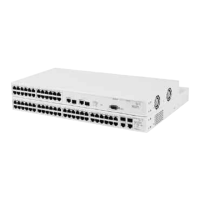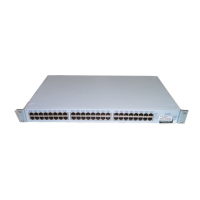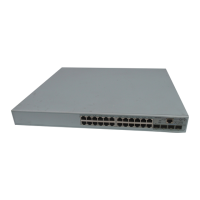84 CHAPTER 11: IP ROUTING
Benefits of IP
Routing
IP routing provides the following features and benefits:
■ Economy — Because you can connect several segments to the same
subnetwork with routing, you can increase the level of segmentation
in your network without creating new subnetworks or assigning new
network addresses. Instead, you can use additional Ethernet ports to
expand existing subnetworks.
■ Optimal routing — IP routing can be the most powerful tool in a
complex network setup for sending devices to find the best route to
receiving devices. (The best route here is defined as the shortest and
fastest route.)
■ Resiliency — If a router in the network goes down, the other routers
update their routing tables to compensate for this occurrence; in a
typical case, there is no need for you to manually intervene.
IP Routing Concepts IP routers use the following elements to transmit packets:
■ Router Interfaces
■ Routing Tables
■ Layer 3 Switching
■ Multiple IP Interfaces per VLAN
Router Interfaces A router interface connects the router to a subnetwork. On your Switch,
more than one port can connect to the same subnetwork.
Each router interface has an IP address and a subnet mask. This router
interface address defines both the number of the network to which the
router interface is attached and its host number on that network. A
router interface IP address serves three functions:
■ Sends IP packets to or from the router.
■ Defines the network and subnetwork numbers of the segment that is
connected to that interface.
■ Provides access to the Switch using TCP/IP or to manage the Switch
using the Simple Network Management Protocol (SNMP)
Figure 23
shows an example of a router interface configuration.
